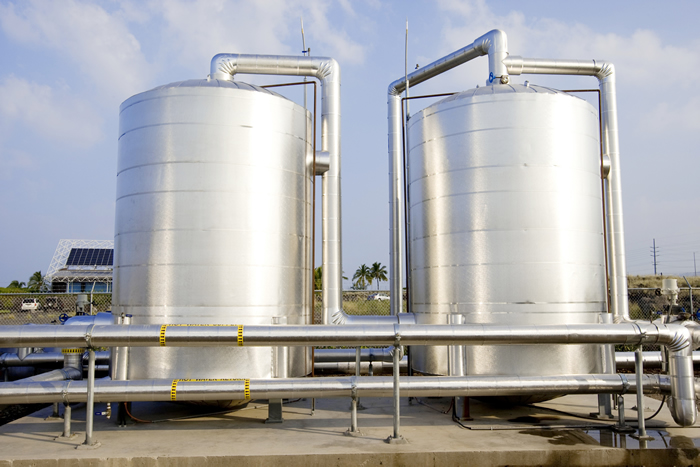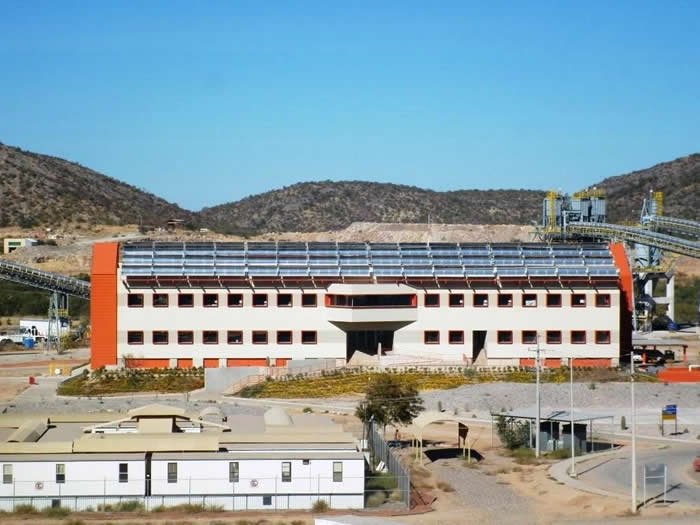MicroCSP power projects all include sun tracker and thermal storage. The cost is around the same as PV but you generate more electricity per day because of the tracker/storage combination so you have a lower cost of energy.
Darren Kimura | Sopogy
Can you give us a short description of MicroCSP?
 “MicroCSP” is a classification of solar technology, similar to “SUV” as it relates to Automobile or “Laptop” as it relates to Computer. We consider MicroCSP the small, modular alternative to large-scaled CSP. This translates into CSP options that can be used for small power projects and rooftop installations. The technology operates at lower temperatures and pressures so its affordable to install and runs automatically.
“MicroCSP” is a classification of solar technology, similar to “SUV” as it relates to Automobile or “Laptop” as it relates to Computer. We consider MicroCSP the small, modular alternative to large-scaled CSP. This translates into CSP options that can be used for small power projects and rooftop installations. The technology operates at lower temperatures and pressures so its affordable to install and runs automatically.
How does the cost of MicroCSP compare to PV?
MicroCSP power projects all include sun tracker and thermal storage. The cost is around the same as PV but you generate more electricity per day because of the tracker/storage combination so you have a lower cost of energy.
Is there an optimal plant size that maximizes efficiency and minimizes cost?
We see 5-25MW project size is ideal on both cost and efficiency.
Storage is a big challenge for PV users. Can you explain how storage works in a MicroCSP plant?
a. Storage units add vital flexibility to a MicroCSP system. Multiple units can be deployed and each unit stores enough heat transfer fluid to prolong production. When cloudy, at sunset or on command, the storage unit provides hot heat transfer fluid for firm and stable production.

b. Storage is critical to managing the natural volatility of sunshine and clouds. Without storage, intermittent clouds make constant solar energy production unreliable. Utilities can curtail and refuse to pay for energy due to production volatility. Absorption chillers lose efficiency. Heat processing becomes inconsistent. Sopogy’s proprietary storage units stabilize production and can even enable load shifting—moving energy production from day to night.
c. In addition to stabilizing energy production, storage accelerates plant start-up. Flooding the collector field with warm transfer fluid in the morning and exploiting morning hot spots in a large solar field can increase daily energy output by several hours. Storage provides flexible capacity, and is key to MicroCSP efficiency.
Sopogy has a number of solar air conditioning projects. How do parabolic solar thermal collectors cool a room? It seems completely counter-intuitive?
a. For air conditioning applications, Sopogy MicroCSP system directly fuels absorption chillers with solar heated transfer fluid. Absorption chillers do not run off of electricity. Traditionally, these chillers run off of boilers burning diesel, bunker oil or natural gas. Sopogy’s collectors replace these fossil fuels with clean, renewable energy. Solar thermal fuel and absorption chillers eliminate the need to generate electricity, resulting in sustainable solar air conditioning.
b. Within the absorption chiller, hot transfer fluid from the solar field heats a solution of water (refrigerant) and lithium bromide (absorbent) in a vacuum under low pressure. The low pressure enables water to vaporize at low temperature. This phase change from liquid to vapor produces a chilling effect. Fans carry cool air through existing infrastructure. Meanwhile, the water vapor is then turned back into liquid in the condenser and re-combined with the lithium bromide in the absorber. Sopogy’s solar fields power a single effect absorption chiller at Sempra Energy in California, and a double effect absorption chiller in Masdar, Abu Dhabi.

What else can be done with MicroCSP thermal energy?
a. Different applications require different temperature ranges. MicroCSP fields are “tuned” to deliver temperature ranges required for a given location. A Sopogy solar field can deliver heat from 50°C (122°F) to 326°C (620°F). An organic Rankine cycle (ORC) engines might require temperatures up to 270°C (518°F), a single effect absorption chiller up to 115°C (240°F), a double effect chillers up to 204°C (400°F). Sopogy fields can fuel heat exchangers for steam, hot water, hot oil, food processing and distilling at any temperature between 50°C and 326°C. The applications are endless.
b. To generate electricity, Sopogy’s MicroCSP system relies on organic Rankine cycle (ORC) engines. Instead of using steam, an ORC engine evaporates an organic liquid under high pressure to drive a turbine at low pressure in a closed loop. The result: Sopogy’s MicroCSP can be deployed and operate on commercial and industrial sites where needed and at the point of consumption. In 2012, Sopogy solar collectors will power a 5-megawatt electricity plant next to a multi-purpose residential, commercial, retail, and office development fifteen miles from Honolulu, Hawaii.
c. For process heat applications, Sopogy MicroCSP system transfers hot fluid from the solar field fuel heat exchangers, replacing diesel, bunker oil, natural gas and other fossil fuels. At the Frabelle tuna canning facility in Papua New Guinea, SopoNova collectors will deliver one megawatt of heat for thawing, pre-cooking, can washing, and boiler feed replacing previously used fossil fuels with clean, renewable energy.
What do you mean when you say Sopogy employs “fabless” manufacturing?
a. To save on freight and tariff costs, Sopogy designed collectors to be manufactured anywhere. Low cost, high quality commodity components and ordinary manufacturing capabilities comprise 70% of Sopogy’s collector construction. This enabling us to provide a cost efficient solution and address any specific manufacturing requirements for a specific project.
b. The transition from fossil fuels to renewable energy has a positive financial, social and environmental benefit. Local job creation, for both solar collector manufacturing and field installation, supports long term economic and social development and provides a stable source of clean, renewable energy.
Do you foresee technological breakthroughs in the future that could increase the efficiencies of CSP systems?
MCSP is already very efficient. In thermal conversion, our technologies are between 40-70% efficiency. It is critical to use the technology in its best application however and the future of MCSP is in thermal augmentation, solar A/C and firm power hybrids.
Darren T. Kimura, President and Chief Executive Officer
Darren T. Kimura is a 17 year serial clean energy entrepreneur. Over his career he has created several companies which he led to multimillion dollar success and liquidity.
Among his numerous start-ups, Mr. Kimura founded Energy Industries, an energy services company, where he led a 150-person international team, and Energy Laboratories a clean technology incubator. He is experienced in acquisitions and private placements, having led the purchase of the Quantum Energy companies and sale of Energy Smart News, Pacific Energy Services and eControls.
Mr. Kimura is on the Board of the Chamber of Commerce of Hawaii. He was recognized as Emerging Entrepreneur of the Year 2000, Inaugural Top 40 under Forty 2000, SBA West Coast Regional Young Entrepreneur of the Year 2002 (California, Hawaii and Arizona), Hawaiian Electric Trade Ally of the Year 2006, Technology Leader of the Year 2006 and Green Entrepreneur of the Year 2007.
As an expert in energy efficient systems, Mr. Kimura has made presentations for the Department of Energy and the Environmental Protection Agency's Energy Star Program. He is a Certified Energy Manager, Certified Demand Side Manager, Certified Distributed Energy Professional and Certified Sustainable Development Professional.
Mr. Kimura holds a B.B.A. from the University of Hawaii.
About Sopogy
Sopogy is the world’s leading developer of patented micro concentrated solar power (MicroCSP) technologies. Sopogy’s MicroCSP systems can generate 30% more energy than fixed-mounted photovoltaic panels. Founded in Hawaii, the company has deployed 18 systems in Hawaii, California, Texas, Florida, Mexico and Abu Dhabi. Please visit www.sopogy.com.
The content & opinions in this article are the author’s and do not necessarily represent the views of AltEnergyMag
Comments (0)
This post does not have any comments. Be the first to leave a comment below.

